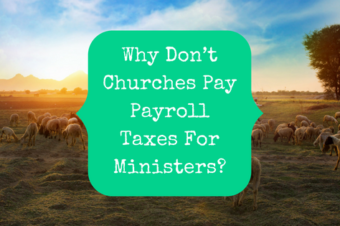
Both President-Elect Donald Trump and Republicans from the House of Representatives have drafted tax reform proposals. What are the chances of tax reform passing in 2017 and how would it affect you?
December 20, 2017 Update: A final version of the tax reform bill has been passed by Congress. Find out how it will affect you here.
I know you’re going to call me a nerd, but I find the history of our federal income tax rather fascinating. It came into being in 1913 by the 16th amendment. In the beginning, the tax rates ranged from 1% for the first $463,826 (in today’s dollars) up to 7% for incomes over $11.5 million.
After many adjustments and additions, the first formal Internal Revenue Code was established in 1939. New taxes and changes were slowly layered on until in 1954 the first wide-sweeping tax reform cleaned up all of the complex tax layers. But then the government went back to making things more complex, with high tax rates, shelters, deductions, the Alternative Minimum Tax, etc. After 32 years of increasing complexity, the nation was ready for the Tax Reform Act of 1986 that simplified things once more. Now, 31 years later, it looks like we are ready to clean things up again. After all, we have 44,000 more pages in our tax law than we did in 1986!

Illustration from A Better Way
Both President-Elect Donald Trump and the House Ways and Means Committee have drafted proposals for tax reform. Now that Trump is headed to the White House and Republicans (who wrote the House proposal) control both houses of Congress, it looks like tax reform may very well become a reality in 2017.
Trump Tax Reform Proposal
On his website, Donald Trump states his vision as:
- Reduce taxes across-the-board, especially for working and middle-income Americans who will receive a massive tax reduction.
- Ensure the rich will pay their fair share, but no one will pay so much that it destroys jobs or undermines our ability to compete.
- Eliminate special interest loopholes, make our business tax rate more competitive to keep jobs in America, create new opportunities and revitalize our economy.
- Reduce the cost of childcare by allowing families to fully deduct the average cost of childcare from their taxes, including stay-at-home parents.
In order to do that, he wants to:
- Reduce the current 7 tax brackets to 3, with rates of 12%, 25%, and 33%
- Increase the standard deduction for married filers from $12,600 to $30,000 and single filers from $6,300 to $15,000
- Eliminate the Head of Household filing status
- Cap itemized deductions at $200,000 for married filers and $100,000 for singles
- Create a deduction from Adjusted Gross Income for care for up to 4 children under 13 (including for stay-at-home parents, not just paid providers)
- Create a deduction from Adjusted Gross Income for eldercare, up to $5,000 a year
- Offer spending rebates for childcare expenses for married couples earning less than $62,400, with a cap based on payroll taxes paid
- Establish Dependent Care Savings Accounts with a $2,000 maximum contribution and provide a 50% match for lower-income families
House of Representatives “Better Way For Tax Reform”
In June of last year, the House Ways and Means Committee unveiled their “Better Way For Tax Reform” proposal with the aim of growing families’ paychecks, growing businesses, and growing the nation’s economy. Their goal is simplicity and fairness for the American taxpayer, so simple that most people could file their return on a postcard. They also want to redesign the IRS and make it a service-oriented agency. To accomplish these objectives they want to:
- Reduce the current 7 tax brackets to 3, with rates of 12%, 25%, and 33%
- Create a larger standard deduction: $24,000 for married couples, $18,000 for individuals with children, and $12,000 for individuals
- Increase child tax credit from $1,000 to $1,500
- Streamline education tax benefits
- Improve the Earned Income Tax Credit
- Reform retirement savings provisions
- Encourage charitable giving through tax incentives
- Eliminate almost all deductions except mortgage and charitable giving
How The Proposals Compare
Both proposals share the desire to decrease the number of tax brackets to 3. They both want to increase the standard deduction (and eliminate personal exemptions) so that most people won’t need to itemize. They both want to help out people with childcare expenses, though they differ in how they would do that.
Their biggest differences are when it comes to itemized deductions. Trump merely wants to put a limit to how much people can deduct. The House Republicans want to truly simplify things and just get rid of most itemized deductions.
How Would These Proposals Affect You?
Now, what you’ve been waiting for: how do these proposals play out in real life? Let’s take a look.
Donald Trump’s website states that “A married couple earning $50,000 per year with two children and $8,000 in child care expenses will save 35% from their current tax bill.” Let’s compare the tax return for that family under our current law, the Trump proposal, and the House GOP plan. Remember, this is much simpler than most people’s actual returns and should be seen as an estimate based on the information available to me.
So, it looks like the claims aren’t too far off. However, if the above couple had more kids, the numbers would skew in favor of our current system because of the dependent exemptions. It is all a balance of tax rates, exemptions, and deductions. And the balance shifts depending on how high or low your income is, your marital status, and how many kids you have. There is no way to know for sure how exactly you, personally, will be affected until something moves from being a proposal to being law.
Is This Actually Going To Happen?
Good question. Things look promising since Republicans control both houses of Congress and the White House and everyone seems to agree that we need tax reform. However, there are key differences in how the different parties think tax reform should be achieved. And the Senate Democrats still hold enough seats to filibuster if they don’t like what’s going on.
In a nutshell, we don’t know what will happen. The last couple of months have shown us that when it comes to US politics, predictions aren’t worth much.
What Can We Do?
This may sound cliche, but all we can really do is pray. As The Message translates 1 Timothy 2:1-3, “The first thing I want you to do is pray. Pray every way you know how, for everyone you know. Pray especially for rulers and their governments to rule well.” Trying to simplify and improve 70,000 pages of tax law is definitely a daunting task. Our leaders need all the prayer they can get.





2 Responses
Don
September 6, 2017Your analysis ignores the fact that single clergy in high tax and high housing cost states will see their taxes increase significantly under either plan where the housing allowance exclusion disappears and property and state taxes are no longer deductible. The increase in standard deduction doesn’t come near in replacing what is excluded or deductible at present. To be honest a single clergy person in California would be better off with no changes to the tax code!
Amy
October 19, 2017There are so many different possible scenarios that I wasn’t able to include them all in the article. You are probably right about single clergy people in California. For me personally, I think there is a good chance that I will end up paying more in taxes as well.